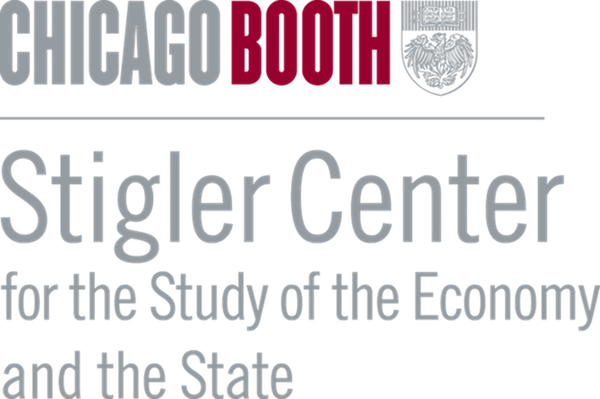In new research, Axel Gottfries and Gregor Jarosch develop a model to understand how wage-fixing cartels operate and show how to gauge the harm they cause to workers.
A number of major poultry processors in the United States have recently settled accusations that they conspired to fix their workers’ wages. According to the Department of Justice’s indictment, the firms involved collaborated in compensation decisions and shared data on their current and future compensation plans. These firms controlled over 90% of the relevant labor market and conspired over a period of two decades. This case, resulting in multimillion-dollar settlements, showcases a practice that Adam Smith recognized centuries ago: employers “are always and everywhere in a sort of tacit, but constant and uniform combination, not to raise the wages of labour above their actual rate.”
Today, regulators worldwide are increasingly prosecuting wage-fixing schemes as part of a broader shift among competition researchers and regulators toward protecting labor markets. Despite this, and despite extensive research on product-market collusion, economists have developed surprisingly few tools to understand how wage fixing operates or how to measure the harm it causes workers.
In our paper “Wage Fixing,” we develop a model that introduces employer cartels into a framework for analyzing employment and wages in the labor market. Our model identifies market characteristics in which cartels are likely to arise and suppress wages. Our findings provide regulators and researchers theoretical insights and practical tools for understanding the workings and impacts of wage fixing.
Understanding wage-fixing cartels
Our analysis aims to accomplish four goals. The first is to identify the economic mechanisms through which wage fixing depresses wages and reduces competition for workers. Second, to capture not only its direct effects on wages but also its indirect effects on employment at both cartel and noncartel firms. Third, to determine which market conditions make wage fixing particularly likely to be stable, profitable, and harmful. And lastly, to offer straightforward and transparent methods to assess the impact of wage fixing that require limited, easy-to-obtain information.
The analysis builds on a framework we developed in a separate paper, “Dynamic Monopsony with Large Firms and Noncompetes,” where we analyzed noncompete agreements, a related, possibly anticompetitive practice used by employers in the labor market to prevent workers from leaving for competitors. Our model features large employers competing for workers via posted wages and endogenously determines pay, employment, and worker turnover. This creates a natural setting to study wage fixing: a subset of employers may form a cartel and collude not to offer wages above a “going rate.”
The critical role of outside competition
A key insight from our analysis is that employers not part of the cartel, whom we refer to as “outsiders,” play a crucial disciplining role that potentially constrains the cartel’s behavior. The cartel cannot suppress wages too aggressively because outsiders ramp up employment when market-wide competition for workers eases due to wage fixing. This leads to a rise in costly turnover for the cartel as their workers leave for better pay from the outsiders, which lowers the profitability of the cartel and keeps it in check. It follows that we should expect wage fixing cartels to arise, be stable, and do harm whenever labor demand of those employers outside the cartel is unresponsive to the cartel’s actions.
When are wage-fixing cartels most harmful?
In light of the preceding argument, our research identifies market features that make wage-fixing cartels particularly powerful:
- High Cartel Participation: When most employers in a market participate in the cartel, and hence there remain few outsiders to provide competitive discipline.
- Decreasing Returns to Labor: When production functions exhibit strongly decreasing returns to labor, limiting the outsiders’ incentives to expand employment in response to wage suppression.
- Input Complementarity: When labor is a strong complement to other input factors and has a low cost share. Since expanding labor requires also expanding the use of other inputs whose cost remains the same, this may result in a muted increase in employment by the outsider to any decrease in their labor costs.
- Limited Cost Pass-Through: When outside firms do not pass through their cost savings from falling wages to consumers via lower prices, they provide less competitive discipline on the cartel. If they did pass through these savings, it would further exacerbate the competitive pressure from the outsiders.
- Labor Market Slack: When unemployment is high and the increased labor demand by outside employers can be satisfied without significantly increasing turnover inside the cartel.
We speculate that these findings may explain why wage fixing has been documented in sectors such as the U.S. food processing industry, which is concentrated and had high cartel participation. One might also argue that labor is a strong complement to intermediates and capital in that industry and that the labor market often has slack. Similar arguments could apply to health care, sports, and education, which are other sectors where wage fixing has been documented.
Market granularity and cartel stability
In addition to these factors, we find an important interplay between the concentration of a labor market and the profitability and stability of employer cartels. Since outsiders can take advantage of the suppressed wages but are not bound by it, cartel employers are tempted to leave. We show that, in concentrated markets with a few large employers, a cartel member recognizes that exiting the cartel would shift the entire market equilibrium and increase competition for workers. This would lower profits for all market participants and, in addition, might further destabilize the cartel. These considerations imply that concentrated labor markets are particularly prone to wage-fixing schemes.
An additional observation that follows from the free-riding argument is that outsider employers that are in the know about the scheme are unlikely to blow the whistle.
Quantifying wage harm
Our paper also offers quantitative analysis to assess the harm cartels cause to worker wages. For a benchmark case calibrated to resemble the U.S. poultry industry, we find moderate overall wage losses of 2-3%. However, these effects can grow quickly under certain conditions. For instance, if the unemployment rate is 10% instead of 6% in an otherwise similar labor market, the wage harm caused by a poultry industry-like cartel increases from just over 2% to about 6%.
The quantitative exercises emphasize how local market conditions govern the scope for wage fixing, providing guidance for enforcement prioritization.
Practical tools for regulators and researchers
We conclude by offering practical tools for assessing wage-fixing harm in real-world cases. Specifically, we develop a statistic to calculate wage harm using observable data on employment inside and outside the cartel, combined with industry-specific information that can be readily obtained. This provides regulators, litigators, and researchers with a straightforward method to evaluate potential cases without requiring extensive proprietary data or relying on a less transparent and complex structural estimation approach.
Authors’ Disclosures: The authors report no conflicts of interest. You can read our disclosure policy here.
Articles represent the opinions of their writers, not necessarily those of the University of Chicago, the Booth School of Business, or its faculty.
Subscribe here for ProMarket’s weekly newsletter, Special Interest, to stay up to date on ProMarket’s coverage of the political economy and other content from the Stigler Center.






